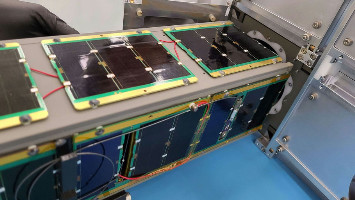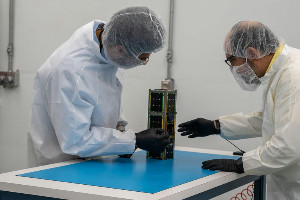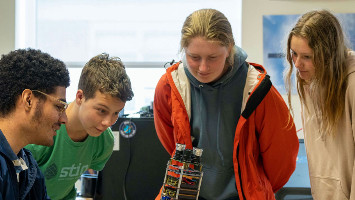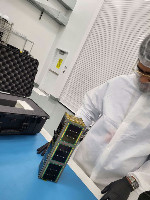| Spacecraft name | MESAT-1 (MESAT1, Maine’s 1st Small Satellite, MEASAT-1) |
|---|---|
| Type | CubeSat |
| Units or mass | 3U |
| Status | Operational? (Mainesat website implies operational and gives TLE but object not identified on Space-Track as of 2024-12-22) |
| Launched | 2024-07-04 |
| NORAD ID | 60209 |
| Deployer | RailPOD [Tyvak] |
| Launcher | Firefly Alpha (ELaNa 43) |
| Entity name | University of Maine |
| Institution | University |
| Entity type | Academic / Education |
| Country | US |
| Launch brokerer | NASA CSLI / ELaNa |
| Oneliner |
Educational mission with amateur radio payloads. |
| Description |
The LTM-1 transponder, provided by AMSAT, will serve as a linear transponder for amateur radio operators to use for recreation and practice in addition to supporting telemetry and command with the satellite systems. This operation will provide education and training in the radio arts for students at the University of Maine, as they monitor onboard systems and receive telemetry and data from the onboard sensors, including remote sensors. MESAT1 will provide licensed amateurs with the opportunity to utilize the onboard LTM-1 linear transponder. The LTM-1 is designed and built by AMSAT. The MESAT1 also provides an opportunity for AMSAT to further characterize and test the capabilities of the LTM-1 in orbit, and to gain more flight heritage for the device. Also, this operation will provide education and training in the radio arts for students at the University of Maine. The MESAT1 spacecraft will also carry an L-band GlobalStar transmitter with a carrier frequency of 1616.25 MHz. This will be used along with the onboard GPS receiver, to provide back to our team, early mission TLEs. These will be published on our website as well as on Space Track, to allow our ground station as well as Hams worldwide to accurately point antennas and access the LTM-1. Phase 1, 0-6 months: LTM-1 will be used for downlinking TLM and command uplinks. EyeStar Globalstar radio will be used for hourly beacons. Phase 2, 6 months-EOL: LTM-1 will be used as linear transponder, command uplinking, and TLM downlinks. The EyeStar Globalstar radio will be decommissioned and no longer transmitting. Education mission that includes three payloads developed by schools in Maine.
|
| Notes | |
| Sources | [1] [2] [3] [4] |
| Photo sources | [1] [2] [3] [4] [5] |
| Keywords | Globalstar or Iridium or Inmarsat |
| On the same launch |
Last modified: 2024-12-22











